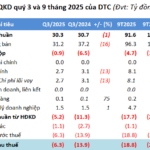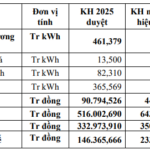
What role does the state play in land governance? In reality, the state has simultaneously assumed three roles: “landlord,” macro-manager, and market participant or player in land governance. Photo: LE VU |
A common sentiment emerged from a recent discussion among media, government, businesses, and experts: without breakthrough thinking and a new approach to land governance, can we be sure that the upcoming amendments and subsequent revisions to the Land Law will effectively serve the country’s development and aspirations without hindering them?
I was excited to read the draft amendments to the Land Law, which is currently open for feedback, as it shows that the authorities have quickly grasped and responded to emerging issues. However, I am concerned about the “pain point” approach to lawmaking. What would be the consequences if laws are changed too quickly and frequently? Not just legal experts but anyone understands that when it comes to the institutional effect on development, what is written in the law is less important than whether it becomes a daily awareness, habit, and behavior and, above all, whether it fosters trust in the stability and predictability of the law.
There is an issue that I have researched and provided feedback on during the development of the 2024 Land Law. Given that the state is the sole representative of the landowner and the sole land manager in Vietnam, why not apply the long-standing public-private partnership mechanism to effectively govern land, especially in implementing large-scale land or real estate projects?
Why a public-private partnership?
There are two main reasons for this:
First, we need to clarify the state’s role and capacity in land governance. In reality, the state simultaneously plays three roles: “landlord,” macro-manager, and market participant. Unfortunately, with all three roles, the state naturally falls into functional asymmetries and conflicts of interest, and if these are not adequately and scientifically addressed, the consequences will negatively impact fairness and hinder economic development. For example, when local authorities applied the new land price framework, which is closer to market prices, the budget surplus was considered a remarkable achievement. This is similar to what happens when land auctions drive up the prices of prime locations. However, businesses and land users suffer because the high cost of land as a production factor makes it impossible to implement any viable business plan profitably. The “economic” consequence is that land prices in the market continue to rise, and economic growth becomes tied to real estate.
Second, from the perspective of large real estate project owners, especially housing projects, developers can make huge profits simply by accessing and obtaining land at low prices from the government. While we must acknowledge the superior business acumen and management skills of private enterprises, their profits are essentially surplus value or land rent that society pays. This situation is considered unfair, so to address it, the Party’s resolutions and the National Assembly’s 2024 Land Law have introduced appropriate amendments to determine market-based land prices. However, when land prices are pushed up across the board, new problems arise, as reflected in public opinion.
How would a public-private partnership in land use work?
This can be considered a breakthrough in thinking and approach. The public-private partnership model is expected to resolve the aforementioned issues, at least regarding large-scale private investment projects involving land, particularly urban development and housing projects.
In theory and practice, projects involving land naturally have two co-owners: the state and private individuals, as they are formed from two sources of capital, including land use rights and cash mobilized by private individuals. Although private project developers are only interested in monetary profits, objectively, these projects serve national and community interests and society. The state must represent, protect, and harmoniously handle these secondary interests during project implementation.
In terms of implementation, the most critical legal foundation for the public-private partnership relationship is the PPP (Private-Public Partnership) contract, which legally binds all issues related to project implementation and addresses the concerns of interested parties based on “harmonious interests and shared risks.” Modern public-private partnership models adopted by the international community even include a third component: the community of citizens who benefit from or are affected by the project.
The key is that PPP, being based on agreement and contract, can be implemented dynamically and flexibly depending on the objective conditions and the practical development needs of each locality, represented by the provincial People’s Committees. Regarding private investors as partners, their interests will be openly discussed, fairly and reasonably addressed, and controlled through transparent processes.
What are the benefits of a public-private partnership?
At a minimum, the public-private partnership model can help resolve fundamental challenges and conflicts in developing large-scale real estate projects related to housing. From the state’s perspective, local governments always want projects to be completed quickly to provide new housing for stable community life, but they also have a motive to charge high land use fees to increase budget revenues. In contrast, private project developers want to ensure commercial viability by reducing or postponing financial obligations related to land input costs.
The PPP agreement mechanism will foster collaboration between the two sides to overcome this issue. Additionally, if the community is involved, it will ensure a balance of interests and provide specific support in compensating and clearing the project site.
Of course, to achieve the overall goal of harmonizing interests as mentioned above, subjective and objective conditions must coexist to implement this model.
First, local governments, in the context of the current regional division, need to set long-term development goals, not budget-oriented, but focused on ensuring and improving the lives of their citizens according to urbanization, civilization, homeownership, and wealth accumulation criteria.
Second, regarding private enterprises participating in the partnership, they need to curb their desire for quick and excessive profits by exploiting personal relationships with the government and taking advantage of policies, mechanisms, and planning. In return for this sacrifice, they will enjoy reasonable agreed-upon profits and the government’s commitment to support licenses, procedures, and processes.
Finally, from the central government’s perspective of macro-control through lawmaking and promulgation, there must be strong political trust to delegate development-related rights and responsibilities to local governments, accompanied by professional supervision, inspection, and sanctions within a legal system.
Attorney Nguyen Tien Lap
– 13:00 22/08/2025
The Perils of Legalized ‘Virtual’ Land Prices: As the Real Estate Market Heats Up, Homebuyers Face Challenges
Despite the lack of infrastructure in many areas, land prices remain high. Notably, there are signs of speculation and price manipulation in certain regions, where artificially inflated values are then used as a basis for official land pricing. This essentially legitimizes these “illusory prices.”
“Ho Chi Minh City Reassesses Land Prices for Three Build-Transfer Projects in Thu Thiem New Urban Area”
The three build-transfer (BT) projects in the Thu Thiem New Urban Area are undergoing a land value reassessment by the People’s Committee of Ho Chi Minh City. These projects, which were under the inspection of the Government Inspectorate, involve a reevaluation of the land already compensated to the investors.
Can Handwritten Contracts Lead to Official Land Ownership Papers?
Effective August 1, 2024, a land-use rights transfer that does not comply with legal regulations but bears the signatures of relevant parties must be accompanied by documentation of land-use rights as stipulated by law. This applies to transfers that occurred prior to the aforementioned date and have not yet received their red book certification.
The Abandoned Villa: A Haven for Pests, Yet Prices Soar
“A decade ago, ambitious construction projects were embarked upon in Ho Chi Minh City, yet today, these areas remain sparsely populated. Despite the apparent abandonment, asking prices for these properties continue to rise steadily.”













































